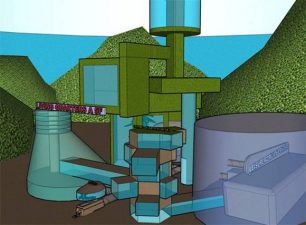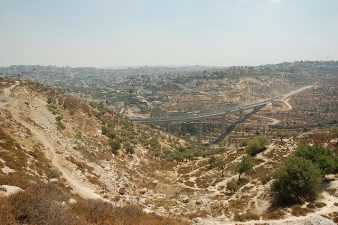 Are Jordan’s snow and Israel’s floods signs of climate change or are they simply flukes of weather? People might argue this for decades there is strong evidence that Mideastern climate has changed dramatically over thousands of years and there is evidence that humans can negatively impact their environment over a much shorter time period.
Are Jordan’s snow and Israel’s floods signs of climate change or are they simply flukes of weather? People might argue this for decades there is strong evidence that Mideastern climate has changed dramatically over thousands of years and there is evidence that humans can negatively impact their environment over a much shorter time period.
The fertile plain between the Tigris and Euphrates have long been known as the cradle of civilization. It is where the wheel, writing and cities were invented. It contained the marsh where the Sumerian’s creation took place. It was the biblical Eden. The Garden of Eden was described with such beautiful language in Genesis:
“And a river went out of Eden to water the garden; and from thence it was parted, and became into four heads. The name of the first is Pison: that is it which compasseth the whole land of Havilah, where there is gold; And the gold of that land is good: there is bdellium and the onyx stone. And the name of the second river is Gihon: the same is it that compasseth the whole land of Ethiopia. And the name of the third river is Hiddekel [Tigris]: that is it which goeth toward the east of Assyria. And the fourth river is Euphrates” (Genesis 2:10-14).
One can almost smell the bdellium-scented breeze moving over the garden’s dark leaves and taste the sweet fruit of the tree of life. Eden’s location was given in relation to the lands of Assyria, Kush and Havila (‘Stretch of Sand’.) It was said to be a meeting place of four great rivers; the Pishon , Gihon, Tigris and Euphrates.
[youtube]http://www.youtube.com/watch?v=Ypyzr8-sUt0&feature=player_detailpage#t=25s[/youtube]
According to the Oxford Dictionary of the Jewish Religion (2011) the name ‘Eden’ comes from an Aramaic word meaning fruitful and well-watered. But Saddam Hussein diverted the waters of the Tigris and Euphrates away from this region and dried up the remains of the world’s oldest garden in order to punish the 500,000 Marsh Arabs who lived there.
He also punished the animals of this region and destroyed the plants. This along with the oil fires and the draining of the Aral sea are some regional examples of the human ability to destroy significant parts of our environment within the short span of a human life. Those who say we are too small to impact our world have lost touch with recent history.
The Tigris and Euphrates rivers are well-known, but the locations of the other two biblical rivers, the Pishon and Gihon, were lost in time. Farouk El-Baz, the same Egyptian-American geologist who found ancient lakes beneath the deserts of Egypt and Sudan, used satellite technology to locate what may be the Pishon river in a dry channel which runs from the Hijaz mountains near Medina northeast to Kuwait.
Two rivers were diverted by man, two vanished into the desert sand.
This region is also where agriculture began and there is some evidence that the fig tree was the first plant to be cultivated. Agriculture allowed us to exchange a nomadic existence for settlements and this began a perilous dependence on technology and environmental modification. Once we began modifying our environment there was no turning back. Perhaps Genesis explained it best:
“Cursed is the ground because of you; through painful toil you will eat of it all the days of your life.It will produce thorns and thistles for you, and you will eat the plants of the field.By the sweat of your brow you will eat your food until you return to the ground, since from it you were taken; for dust you are and to dust you will return.”
The Flood
The desertification of two biblical rivers were by no means the only catastrophic environmental change in the Mideast. We’ve seen evidence that Egypt’s pyramid builders may have been affected by long periods of drought and fires. Another climate catastrophe happened sometime around 8,000 years ago after the last ice age ended. Sea levels rose until the Indian Ocean broke through the straits of Hormuz flooded what had once been a fertile oasis in the desert between these four ancient rivers. A land the size of Great Britain disappeared beneath the sea. If this is where Eden was, we can never return.
The sea may have continued to rise. When Portuguese explorer Pedro Teixeira visited Bahrain in 1603, he saw how fresh water was obtained from springs three and a half fathoms beneath the sea. Men would earn their living by diving down with water skins, collecting fresh water and bringing it to the surface.
In “Kings of Harmoz”, he wrote that, “Certain of the oldest Moors of the isle, with whom I spoke of this, told me that these springs were once far inland; but the sea broke in and overflowed them, as we see at this day.”
The end of the last ice age also raised the sea levels of the Mediterranean and sea of Marmara until about 7000 years ago they broke through the Bosporus channel in Turkey. Robert Ballard, the undersea explorer who rediscovered the Titanic, has been exploring the sterile bottom of the Black Sea. He found evidence of ancient shorelines and even human settlements far beneath these notoriously stormy waters.
Ballard recently found evidence that the sea level rise was not gradual here. He told ABC news, “It probably was a bad day. At some magic moment, it broke through and flooded this place violently, and a lot of real estate, 150,000 square kilometers of land, went under.”
In the six hundredth year of Noah’s life, on the seventeenth day of the second month—on that day all the springs of the great deep burst forth, and the floodgates of the heavens were opened. 12 And rain fell on the earth forty days and forty nights. (Genesis 5:32 11-12)
Was there 100% chance of rain in northwestern Turkey on the seventeenth of February 8000 years ago? Can anyone say they understand climate based on their personal experience? Societies which are focused on individualism, fads and the next 90 days of corporate profits are unlikely to see the big picture that even a six hundred year-old Middle Eastern man was too young to fully understand.
Photo of Cole Thomas, expulsion from the garden of eden, 1828 public domain via wikimedia commons.




Because of massive and growing pollution, the global climate is in chaos.